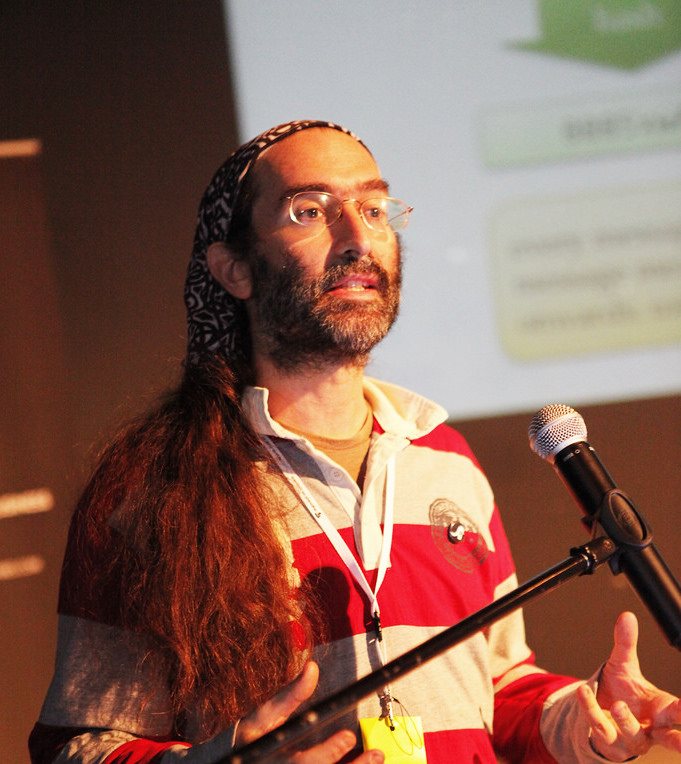The late afternoon session on Saturday was dedicated to the theme of “Designing Alternatives”. Matthew Slater, a software activist from the UK, introduced the prototype of an online platform implementing the crypto currency payment method. Slater has been building an open-source mutual credit system for five years now. As co-founder of Swiss NGO Community Forge and a community currency consultant, he helps host around 80 communities’ web sites, from donations only.
He first explained the term crypto currency as “a block chain or simply a chain of blocks” and stated that a cryptographic chain makes manipulating points very expensive, as new messages are appended to the old ones, so changing one element means recalculating the entire chain from that point onwards. Therefore, he looks into alternatives and factors that constitute their success. Here he stressed how important design and its parameters are in finding answers and, because cryptos are “more of a phenomenon” than a product, those parameters are created accordingly. The number of coins, block time or “release rate”, mining difficulty and hashing algorithms are discussed as underlying principles of the crypto currency design.
As successful crypto currencies, Slater listed Bitcoin – the “most used” – and Dogecoin – an innovative “currency of appreciation”. What truly formulates their success? “A good PR behind them”. Scotcoin a crypto currency that belongs in the category of national/regional cryptos, is another ”great idea”, and so is Aurora, “because you can actually do it on a national scheme”. However, the main point of his critique was that as much as effective PR is crucial to the currency implementation process, it cannot make up for the lack of substance in the designed product – and that applies to crypto currencies as much as to anything else.
Cryptocurrencies: Designing Alternatives
When designing community’s cryptocurrency, one should decide who and what it is for and whether it’s “the best tool to serve the purpose”. What follows in the process is a need of a suitable payment infrastructure – cryptos cannot be used in a shop, outdoor settings, or as Matthew puts it, “in a real situation”; instead, “you have to go back to your PC”. All these aspects need to be taken into account and so need the issues of governance, law, tax and privacy.
Later, Slater asked the audience to take a step back and reconsider classic functions of money, such as the store value (something that “shouldn’t go down to zero all of a sudden”), the medium of exchange and the measure of value. “A little deflation isn’t too bad if you hold money for a long term”, but if you plan to exchange and it’s an equal value “we can just say it’s the same” even if the currency as such is different.
“Bubble gum is yours because you paid for it”
In his presentation Slater also discussed the difference between commodity money (controlled by wealth) and credit money. The first one is backed up by gold in the bank and if you want to buy something you have to get the money (cash) first. The other is “harder to redeem” and “requires trust” on both parties.
Finally, he moves on to the project of Ethereum, which according to him resembles the next generation and the idea behind it is that ordinary people will have a chance to buy and sell virtual commodities and execute credit contracts with lawyers. With a significant interest in communities it allows certain “protectionism”, limiting ownership by restricting access to account creation (as he explained during the discussion panel afterwards) and assuring fixed exchange rates.



